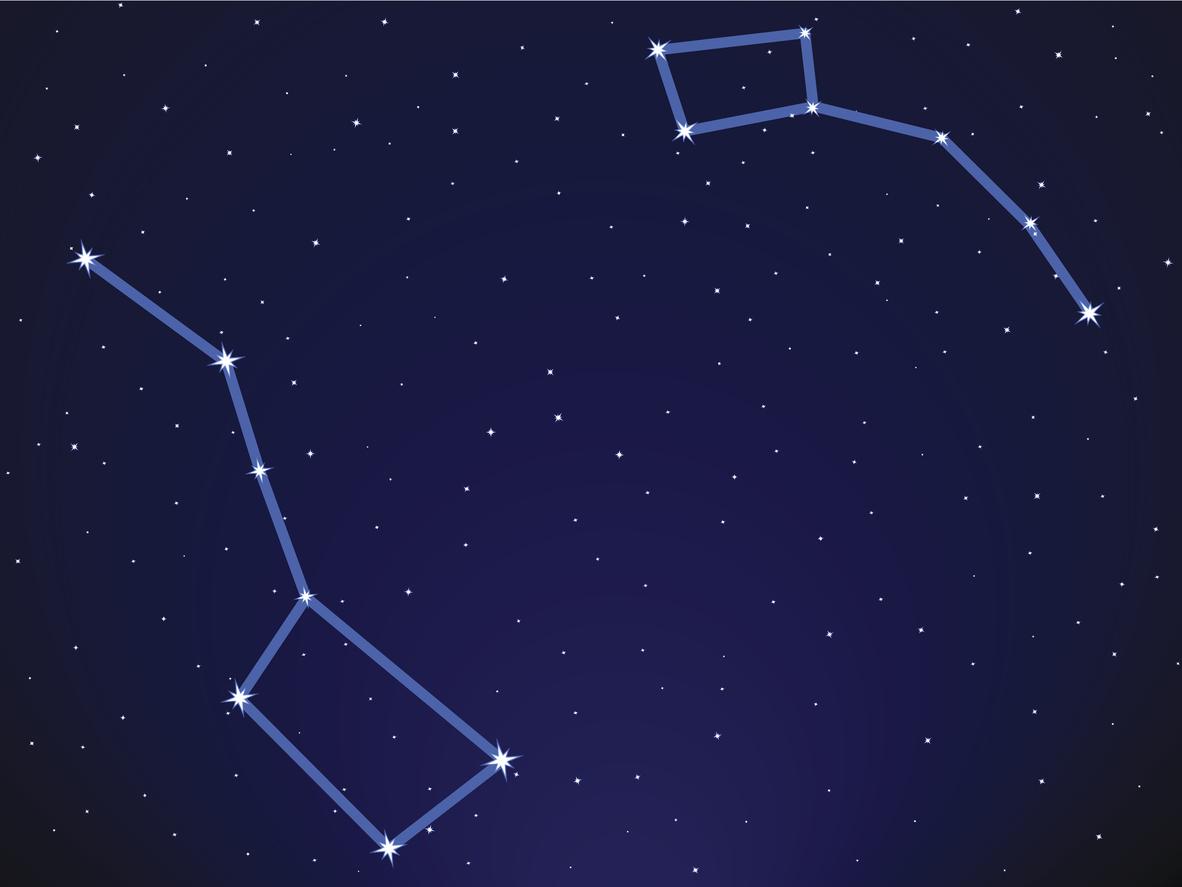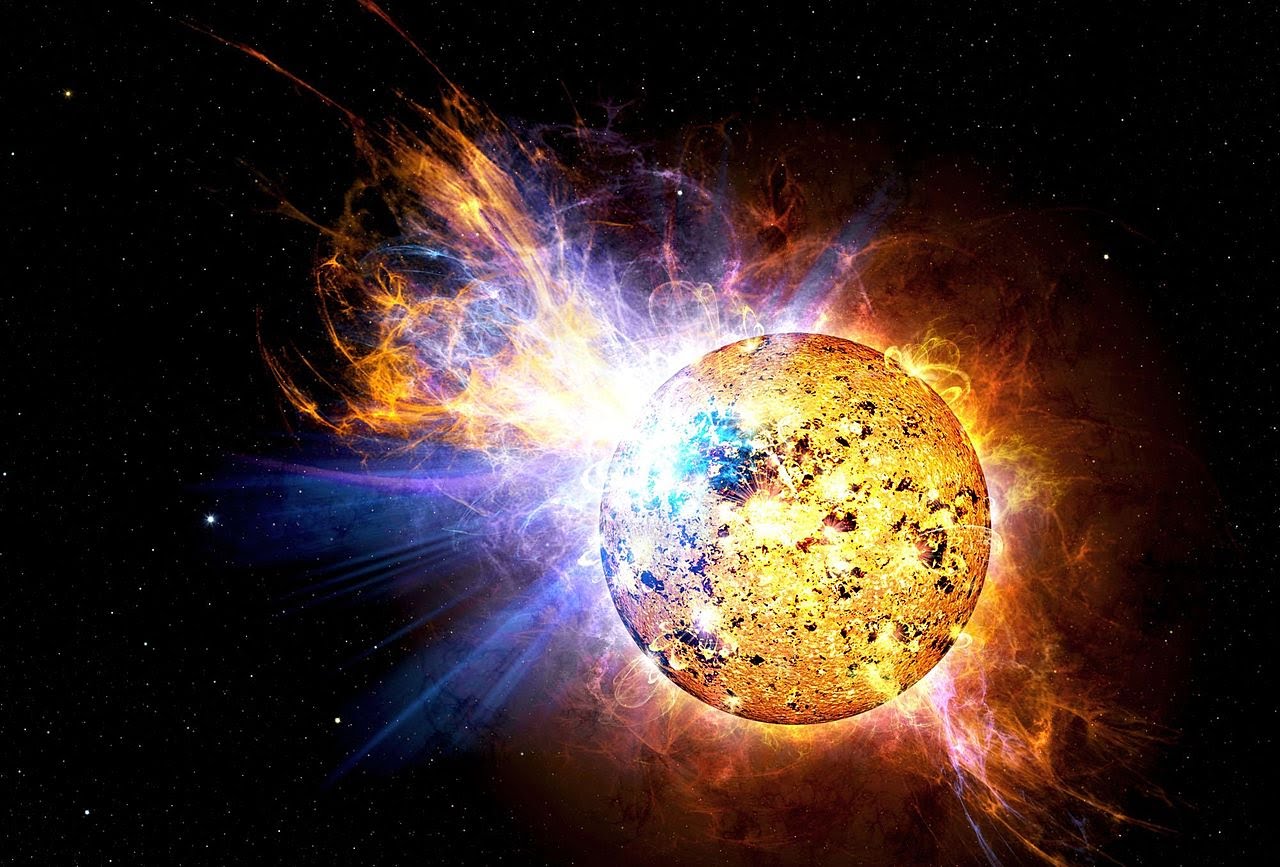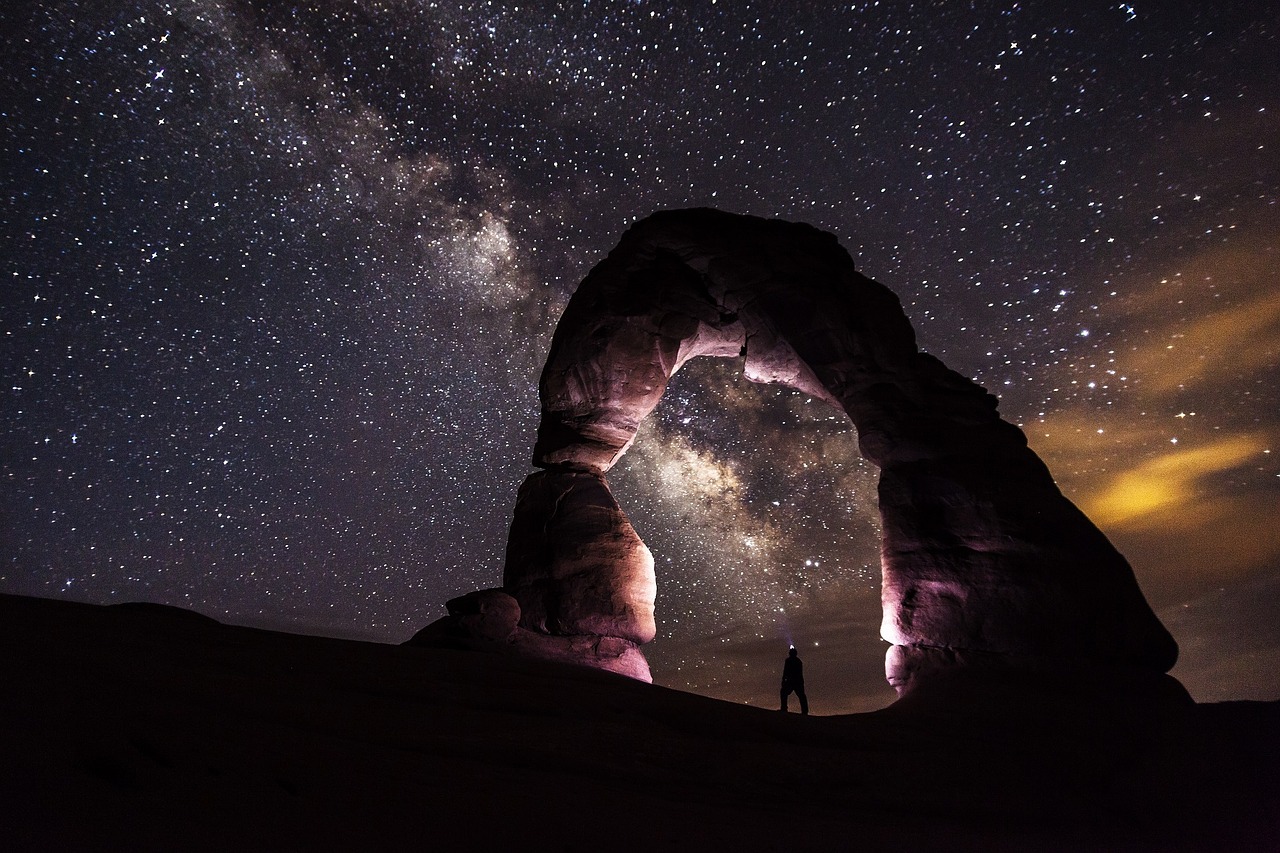Each of the names of the constellations is related to the shape they take in the sky and that of Leo is very similar to a feline silhouette. Here you will find everything you are looking for leo constellation, its characteristics, stars that make it up, mythology and more

What is the constellation Leo?
La leo constellation, is part of the thirteen zodiac constellations, which is crossed by the Sun every year, between the months of August and September. It is one of the less luminous constellations, due to its proximity to the constellations of Cancer and Virgo.
It is the home of many stars whose brightness is quite intense, among which we can mention Alpha Leonis, which forms the heart of the feline, and Beta Leonis, which represents the tail of this imposing cosmic animal.
This constellation can be seen very easily at night and without specialized equipment, in the month of February.
constellation location
To find the Leo constellation, you just have to wait for the spring season to arrive. When its visibility is greater and climates with more pleasant temperatures begin, in the northern hemisphere. Around nine o'clock at night is the ideal time to observe it on the stellar horizon.
The reference that must be found for a quick location is to find the Big Dipper and its seven stars that make it up. This constellation is shaped like a large spoon. Look carefully until you find the pointers that form the end of the bucket, these will guide you until you reach Leo, who is between the Cancer crab and the Virgo girl.
Now it's time to find the sickle, which is a group of stars within the constellation, which form the head and the lush mane of the lion. To make it easier for you, imagine a question mark written backwards.
It is very easy to locate, because the brightness of its stars is so great that it cannot go unnoticed. At the bottom of that grouping of stars, you will see the tail of the lion in a kind of triangle.
Constellation Characteristics
It is important to know the particularities of this constellation, because it helps in understanding the true meaning of the constellation of Leo.
- It is located as the fifth constellation, of the group that groups the twelve constellations of the zodiac.
- It is a very old constellation, it was named in the Almagest of Ptolemy.
- Within the Leo constellation, a meteor shower phenomenon occurs and these can happen three times.
- The constellation houses thousands of galaxies with very intense brightness and with separations between them of up to 30 million light years.
- The Star King crosses this constellation around the months of August and September.
- It can be located between the constellations of Cancer to the west and Virgo to the east.
- To the north is the pointing star and to the south are the stars Hydra and Crater.
- The shape of the constellation is very similar to the silhouette of a lion, highlighting the question mark that forms the mane and head of this great feline.
Leo constellation and its stars
Although the Leo Constellation is made up of an important group of stars, there are some that are more renowned for their size and brightness. The most important are mentioned below:
Regulus or Regulus
This Leo star, also called Alpha Leonis, is characterized by being the brightest star within the constellation and is among the first 20 of the stars that shine the most during the Earth's night.
The celestial body Regulus can easily be seen at night, practically all year round, except for the period in which the Sun is closest to it, between the months of July and August.
As you know, this group of stars can be quickly located in the sky, due to the peculiar shape they form. It resembles a sickle and Regulus is positioned as the magician's tip of this agricultural tool.
Occasionally this star may disappear into the sky, but it is because it is located in the path of the Sun, the Moon and other planets, which interrupt its visibility.
As a curious fact, the constellation of Leo and especially Regulus, have appeared in science fiction movies such as Star Trek, Harry Potter, Babylon, among others.
Denebola
This star is also called Beta Leonis and is the second brightest star in the Leo constellation. Its size is twice the mass of the Sun and the distance that separates it from Earth is more than 30 light years.
His name is of Arabic origin and means lion tail, the physical characteristics of Denebola are:
- It is a white star.
- The temperature exceeds 8000 °K.
- The intensity of its light is greater than that of the Sun about ten times more.
- In size it also exceeds the Star King, very close to double.
- It has a lifespan of less than 350 million years.
algieba
form a binary group of Stars, which can be seen very easily in the spring season. It is also called Gamma Leonis and the distance between it and Earth is a little over 120 light years.
The stars that make up this binary grouping are:
- The main one that receives the name of Gamma Leonis A, has a yellow color with golden hues and its size is twenty times larger than the Sun.
- Gamma Leonis B, is the one that supports this group, it has a fairly intense yellow color and its size is smaller than that of its stellar companion.
The location of this celestial body in the sky is quite fast, as long as the stellar vault is clear. The first thing they must do is identify the mother constellation, which in this case is Leo. At sunset, it is facing west in the sky.
As you know, the constellation of Leo forms a Sickle, Algieba is quite bright and is in the third position of the Sickle. To enjoy its beauty, you can use a low-end telescope.
You must have noted down to look for Algieba in the sky, in your list of things for this spring season. So prepare your star map and all the necessary implements, so that you can make the best record of these fascinating stars.
Zosma or Duhr
It is a star in the Leo constellation, although its brightness does not have the intensity of Regulus or Denebola, it is quite bright and has been ranked among the 100 brightest in the sky.
The name is an Arabic word that means The lion's back, can also be named as Delta Leonis. The main features are:
- It is a white star.
- The temperature is higher than 7000 °K.
- The intensity of the light exceeds that of the Sun by more than 20 times.
- It can rotate on its own axis at a speed of 200 kilometers per second.
- It has no cosmic dust clouds around its perimeter.
- It is over 500 million years old.
- It has a distance of 60 light years from the solar system.
Chort or Theta Leonis
It is also called Chertan and ranks as the sixth brightest star in the Leo constellation, but in the general classification of the entire galaxy, at least 200 stars precede it with the greatest brightness.
Within the constellation of the feline, it is located in the back. The name of Chertan comes from Arabic and means small ribs, alluding to the flanks of the Lion.
Among the most significant features are:
- It is a white star.
- The distance between it and Earth is more than 150 light years.
- It has temperatures close to 10000 °K.
- Although it is quite distant from Earth, the intensity of its light is quite significant, compared to that of the Sun.
- Its rotation period lasts one week and it runs at an average speed of 20 kilometers per second.
- Chertan has an average age of 400 million years.
aldhafera
Like the rest of the stars in this constellation of Leo, its name comes from the Arabic language and means curls and this name suits him very well because of the similarity of the mane of the King of the jungle.
The main features of this star are the following:
- It belongs to the group of yellow-white stars, which are rare.
- Its surface temperature is 7000 °K.
- It has a light intensity that can exceed that of the Sun, 200 times more.
- The rotation time is 6 days at an average speed of 80 kilometers per second.
Other stars in the constellation
- Ras Elased, occupies the fifth square in luminosity of the Leo constellation. It is a yellow giant star, with a temperature that exceeds 5000 °K and is 250 light years from the solar system. It is also one of those with the longest rotation period, lasting more than 6 months.
- Eta Leonis, is a white supergiant and is counted as number eight in light intensity in the constellation. Of all the set of stars Eta Leonis, it is one of the most distant in the solar system, exceeding 2000 light years.
- Iota Leonis, is a binary star composed of a yellow giant and a yellow dwarf, the distance between it and the solar system is 80 light years. Its temperature is above 6000 °K and the age of the star is estimated to be approximately 1300 billion years.
- kappa leonis, is in the category of orange giant, whose temperature ranges from 4000 °K. And the intensity of its light is greater than that of the Sun, about 100 times, the rotation movement can take more than a year. It is estimated that its age is about 1200 million years.
- alterf, belongs to the Leo constellation and is an orange giant. It emits large amounts of infrared radiation, exceeds 3500 °K in temperature and is separated from the solar system by 300 light years. Like Kappa Leonis, it takes a year to turn on its own axis.
The Leo constellation in mythology
The legend of the constellation of the king of the stellar vault revolves around the Nemean Lion and Hercules. Although here on Earth he is no longer seen as the king of the jungle, in the galaxy he proclaims himself as the king of the night skies.
The history of this constellation is related to the award ceremony that the father of Hercules, the god Zeus, wanted to make after having defeated the Lion of Nemea. The reward was to send him to the firmament, so that everyone would remember the bravery of his son.
The Nemean Lion
This was a beast very feared by many, wherever it passed, fear spread everywhere. And not in vain had he earned that fear, since he was the son of the god Typhoon, responsible for producing the strong winds of hurricanes.
Contenders came from all sides, but none had managed to defeat him. For this reason it became the main course of the twelve labors that had been entrusted to the great Hercules.
Legend has it that Hera resented Zeus, who was her husband, for having procreated Hercules with a mortal woman. This situation kept Hercules in constant suffering and in a fit of rage, he murdered Hera, her children and some of her nephews who were there.
After having passed the attack of rage and aware of the atrocious act committed, so much was his regret that he decided to go as far as he could and be without contact with the rest of the people.
But his brother was able to find him and induced him to seek the wise advice of the Delphic seer. She this she entrusted him to perform twelve works, with which she would alleviate all the sorrows and guilt of her.
accepting the challenge
The young Hercules immediately accepted the challenge, because he wanted to atone for his sins as soon as possible. The first job was to put an end to the stalking of the Nemean Lion, it was quite an uphill task to accomplish it due to the history of victories that the beast had.
To successfully complete his task, he had the brilliant idea of covering one of the doors of the cave where the Lion lived. This forced the beast to have to go out through the door that was free and it was there that Hercules squeezed him by the neck, until he was breathless.
Once the life of the animal was finished, he prepared to remove its skin and for this arduous task he followed the advice of the goddess Athena. With the skin a war suit was made, which included a protector with the Lion's own head.
Thus he continued with the rest of the remaining 11 works and with this he got rid of the remorse and the burden of conscience that his sin had produced. For this reason, Zeus in reward for his heroism sent him into the sky as the constellation Leo.
Leo astrological symbology
This constellation is number five of the zodiac and the Sun crosses it between the months of July and August. But in the zodiacal table it is from August 18 to September 22. For experts in astrology, Leo is considered the sign that exerts the greatest dominance of the entire zodiac.
The colors that identify Leo are yellow, gold, red and orange. The gems and precious metals that he does well with are: amber, diamond, ruby and gold. Within the zodiac classification, Leo is among the fire elements. Some of the things that shape the personality of those born under this sign are: Pride, creativity, vanity, fame, greatness, intelligence and power.
The sign of Leo conflicts, with Aries and Sagittarius who are also fiery. Of the air signs, he only gets along with Aquarius, people of the Leo sign clash a lot with those who have Moon in Taurus and Scorpio.
Leos maintain very good relationships with those of the Libra and Gemini signs. Those born with the shelter of the Leo sign, act among their peers in the same way, in which the Lion behaves in its natural state, always trying to dominate those around him. The Leo constellation today continues to generate information that increases the desire of astronomy and astrology enthusiasts to continue delving deeper into their study.
If for some reason you have the opportunity to be in front of a telescope and it is a spring night, do not hesitate to turn your attention to the sky and try to locate this beautiful and magnificent constellation. You will see that you will have a pleasant surprise.




